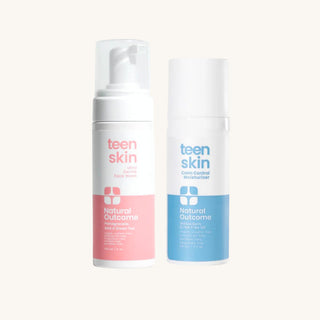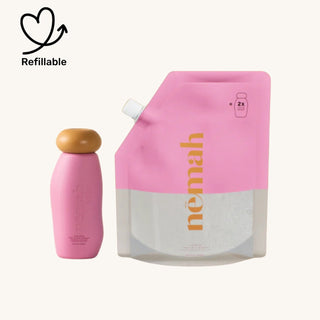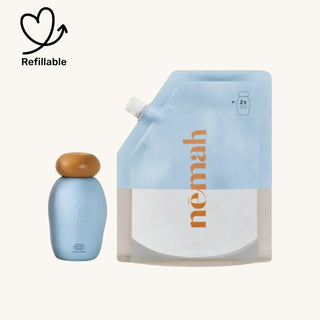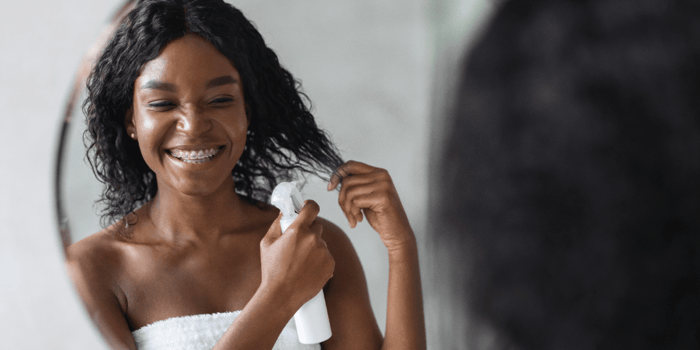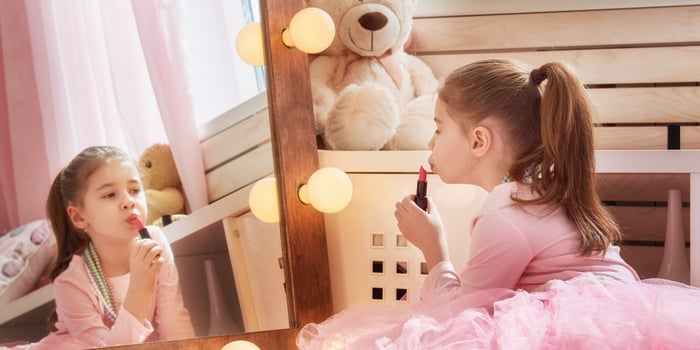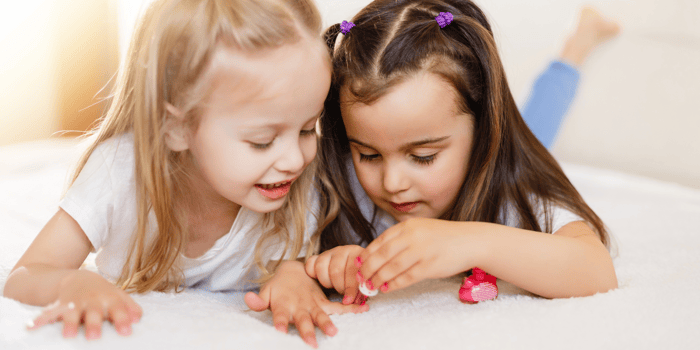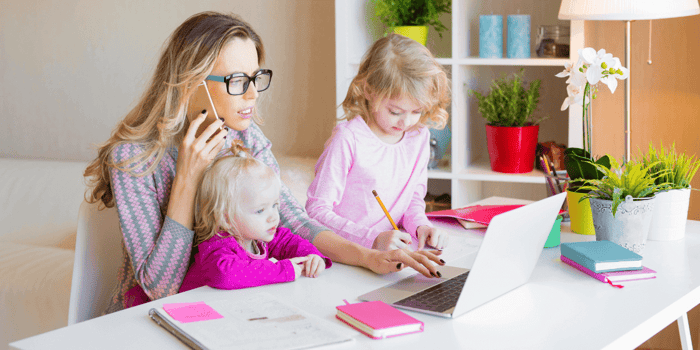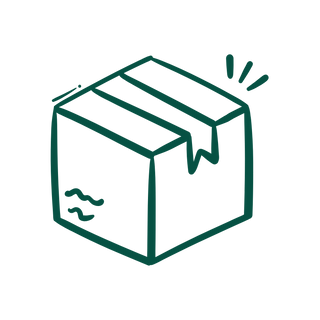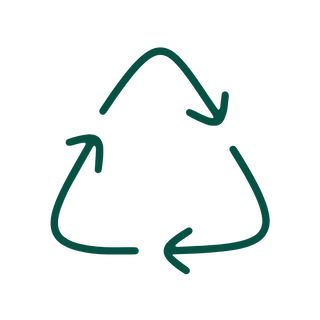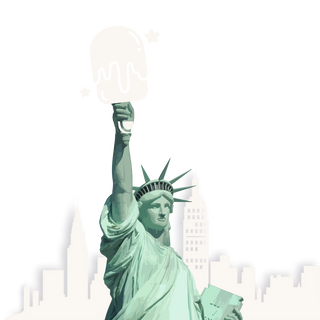Table of Contents
- Introduction: Why Non-Toxic Hair Care Matters for Kids
- Section 1: Harmful Ingredients to Avoid in Kids’ Hair Care Products
- Sulfates (SLS and SLES) — Harsh Detergents That Strip Hair
- Synthetic Fragrances — Hidden Chemicals That Trigger Allergies
- Parabens & Formaldehyde-Releasing Preservatives
- Silicones (Dimethicone, Cyclopentasiloxane) — Temporary Shine, Long-Term Buildup
- Drying Alcohols — Scalp Irritation and Frizz
- Quick Recap for Parents
- Section 2: The Best Non Toxic Shampoo for Kids (and Matching Conditioners)
- Section 3: Safe, Chemical-Free Detanglers for Kids
- Section 4: How to Build a Simple Non-Toxic Hair Care Routine for Kids
- Section 5: DIY Non-Toxic Hair Care Recipes for Kids
- Section 6: Baby Hair Care Products & Safe Options for Infants
- Conclusion: Raising the Next Generation of Healthy Hair Lovers
- FAQs
Introduction: Why Non-Toxic Hair Care Matters for Kids
Finding the best non toxic shampoo for kids isn’t just about shiny hair—it’s about protecting their health. What goes on your child’s scalp is absorbed just as readily as what goes on their skin, and many mainstream shampoos, conditioners, and detanglers still contain harsh chemicals like sulfates, parabens, and synthetic fragrances. These ingredients can strip away natural oils, irritate sensitive scalps, and even disrupt developing hormones. Since children’s hair is finer and their skin more permeable than adults’, they require gentler, chemical-free care to stay healthy, soft, and tangle-free.
The problem is that words like “natural,” “gentle,” or “hypoallergenic” on a bottle don’t guarantee safety. Even baby- and toddler-marketed products may hide preservatives, artificial perfumes, and other allergens that have no place in a child’s routine. That’s why parents need to look deeper than labels and choose products backed by transparent ingredient lists and clean formulation standards.
In this guide, we’ll walk through everything you need to know about non-toxic hair care for children: which harmful ingredients to avoid, what makes the best non toxic shampoo for kids truly safe, and which brands meet the highest safety standards. You’ll also discover gentle conditioners, chemical-free detanglers, simple step-by-step routines, and easy DIY recipes you can make at home.
By the end, you’ll know how to confidently choose shampoos, conditioners, and detanglers that keep your child’s hair strong and nourished—while giving you peace of mind that their daily routine is free from unnecessary toxins.
Section 1: Harmful Ingredients to Avoid in Kids’ Hair Care Products
Parents often assume that if a product is labeled “gentle,” “natural,” or “dermatologist-tested,” it must be safe for children. Unfortunately, research shows this is not always the case. According to the Environmental Working Group (EWG), many mainstream shampoos and conditioners marketed to children still contain harsh chemicals that can irritate the skin, disrupt hormones, and impact long-term health. Since a child’s scalp is thinner and more permeable than an adult’s, chemicals applied here may penetrate more easily and enter the bloodstream. This makes ingredient scrutiny critical when choosing the best non toxic shampoo for kids.
Below are the most common harmful ingredients in kids’ hair care, why they matter, and safer alternatives to look for.
Sulfates (SLS and SLES) — Harsh Detergents That Strip Hair
Sodium lauryl sulfate (SLS) and sodium laureth sulfate (SLES) are common foaming agents in shampoos. While they remove dirt and oil effectively, studies published in Contact Dermatitis and Pediatric Dermatology link sulfates to increased irritation in sensitive and eczema-prone skin. In children, sulfates can strip the scalp of protective oils, causing dryness, itchiness, and flaking.
Safer Alternative: Gentle surfactants derived from coconut, such as cocamidopropyl betaine, or natural options like soap nut extract, cleanse without the harsh side effects.
Synthetic Fragrances — Hidden Chemicals That Trigger Allergies
“Fragrance” or “parfum” on an ingredient list often represents a mixture of dozens, sometimes hundreds, of undisclosed chemicals. A report from the Campaign for Safe Cosmetics highlights that these blends often contain phthalates, which are associated with endocrine disruption and developmental concerns. Children with asthma or eczema are particularly vulnerable, as artificial fragrance is a documented trigger for both respiratory and skin reactions. This is why parents searching for the best non toxic shampoo for kids should always look for products that are either fragrance-free or scented only with clearly labeled, plant-based extracts.
Safer Alternative: Choose products scented only with essential oils (such as chamomile or lavender) or fruit extracts. Transparency is key—if a brand does not disclose the source of its fragrance, it is safer to avoid it.
Parabens & Formaldehyde-Releasing Preservatives
Parabens are widely used as preservatives, but studies in the Journal of Applied Toxicology have shown they can mimic estrogen, raising concern about hormonal disruption in children. Equally concerning are preservatives such as DMDM hydantoin and quaternium-15, which release formaldehyde over time—a known carcinogen, according to the International Agency for Research on Cancer (IARC). Even at low levels, formaldehyde can cause skin sensitization, allergic reactions, and cumulative exposure concerns. Choosing the best non toxic shampoo for kids helps parents avoid these hidden preservatives and protect developing hormonal systems.
Safer Alternative: Plant-based preservation systems like radish root ferment filtrate, potassium sorbate, and vitamin E provide protection against bacteria and mold without endocrine-disrupting effects.
Silicones (Dimethicone, Cyclopentasiloxane) — Temporary Shine, Long-Term Buildup
Silicones are often added to children’s conditioners and detanglers to create artificial smoothness. However, International Journal of Trichology research shows that silicones coat the hair shaft, preventing true hydration and eventually leading to dryness and breakage. They also require harsher cleansers (often sulfates) to wash out, creating a damaging cycle. For parents committed to the best non toxic shampoo for kids, avoiding silicones altogether is essential to keeping hair genuinely nourished and scalp health intact.
Safer Alternative: Conditioning agents like aloe vera, shea butter, and argan oil penetrate the hair shaft, moisturizing naturally without buildup.
Drying Alcohols — Scalp Irritation and Frizz
Short-chain alcohols such as isopropyl alcohol and ethanol evaporate quickly, stripping moisture from the hair and scalp. According to dermatology findings published in Clinical, Cosmetic and Investigational Dermatology, repeated use of products with drying alcohols contributes to brittle hair and irritated scalps. This effect is magnified in children, whose scalps have less natural sebum protection than adults. Selecting the best non toxic shampoo for kids ensures gentle cleansing without the damaging effects of harsh, drying alcohols.
Safer Alternative: Fatty alcohols, such as cetyl and stearyl alcohol, are plant-derived and work to soften hair instead of depleting it.
Quick Recap for Parents
Avoid sulfates that strip natural oils and aggravate eczema.
Skip synthetic fragrances that can hide phthalates and allergens.
Watch for parabens and formaldehyde releasers, both linked to hormone disruption.
Say no to silicones that mask dryness instead of nourishing.
Limit drying alcohols that cause irritation and frizz.
By understanding these red-flag ingredients and what science tells us about their risks, parents can feel confident seeking out safer alternatives. Choosing the best non toxic shampoo for kids starts with knowing what not to buy.
Section 2: The Best Non Toxic Shampoo for Kids (and Matching Conditioners)
Finding the best non toxic shampoo for kids can be overwhelming when so many bottles claim to be “natural” or “gentle” yet still contain hidden toxins. A truly safe shampoo should be free from sulfates, parabens, synthetic fragrances, and silicones—all of which are well-documented irritants or endocrine disruptors. For example, research in the International Journal of Environmental Research and Public Health has shown that children are especially vulnerable to chemical exposures due to their thinner skin and developing systems. Hair care is no exception.
To protect children’s scalps while keeping hair healthy and manageable, parents should look for shampoos and conditioners that meet three standards:
Sulfate-free cleansing that won’t strip natural oils.
Fragrance-free or naturally scented formulas, with full disclosure of ingredients.
Moisturizing, pH-balanced bases with plant-based hydrators like aloe vera and coconut-derived cleansers.
What to Look for in a Truly Non-Toxic Shampoo
Sulfate-Free: Avoids harsh foaming agents like SLS and SLES, which clinical dermatology studies have linked to irritation and barrier disruption.
No Synthetic Fragrances: Prevents exposure to phthalates, which the National Institute of Environmental Health Sciences (NIEHS) identifies as endocrine disruptors.
Hydrating, pH-Balanced: Helps preserve the scalp’s natural microbiome, critical for preventing dryness and irritation.
Plant-Based Ingredients: Uses botanical cleansers and conditioners instead of petroleum-derived chemicals.
The Best Non Toxic Shampoos for Kids
Dabble & Dollop 3-in-1 Shampoo, Body Wash & Bubble Bath
Formulated with food-grade ingredients, this multi-use cleanser is free from sulfates, parabens, and harsh surfactants. The mixable fruity scents are allergen-tested and safe for sensitive skin. Unlike synthetic fragrances, the natural blends are transparent and parent-approved—making this a fun, gentle option in the category of the best non toxic shampoo for kids.
Best for: Kids who enjoy sensory play during bath time.
Key Ingredients: Coconut-based cleansers, fruit extracts, radish root ferment as a preservative.
Why It’s Safe: Dermatologist-tested, tear-free, and designed specifically for children.
Rainbow of Bubbles – Bubble Bath Gift Set for Kids

$89.99
Make bath time a sensory adventure with Dabble & Dollop’s Rainbow of Bubbles — a bubble bath gift set featuring seven naturally scented 3-in-1 formulas. This tear-free Shampoo, Body Wash, and Bubble Bath collection includes strawberry, coconut, blueberry, vanilla, lemon,… read more
Nemah’s Baby & Kids Body Wash & Shampoo
This gentle, plant-derived formula cleanses and protects delicate skin and hair without the harsh chemicals found in many mainstream baby shampoos. Free from synthetic fragrances, sulfates, parabens, and dyes, it’s crafted with dermatologist-approved ingredients parents can trust. Chamomile and aloe help soothe irritation and support the skin’s natural barrier, while jojoba oil and coconut oil provide vitamins and fatty acids that deeply nourish—placing it firmly in the category of the best non toxic shampoo for kids.
Best for: Infants and young children with sensitive or easily irritated skin.
Key Ingredients: Chamomile extract, aloe vera, jojoba oil, coconut oil.
Why It’s Safe: Tear-free, lightly scented, and available in sustainable refill packaging to reduce waste.
Non-Toxic Baby & Kids Body Wash & Shampoo – Refillable Set
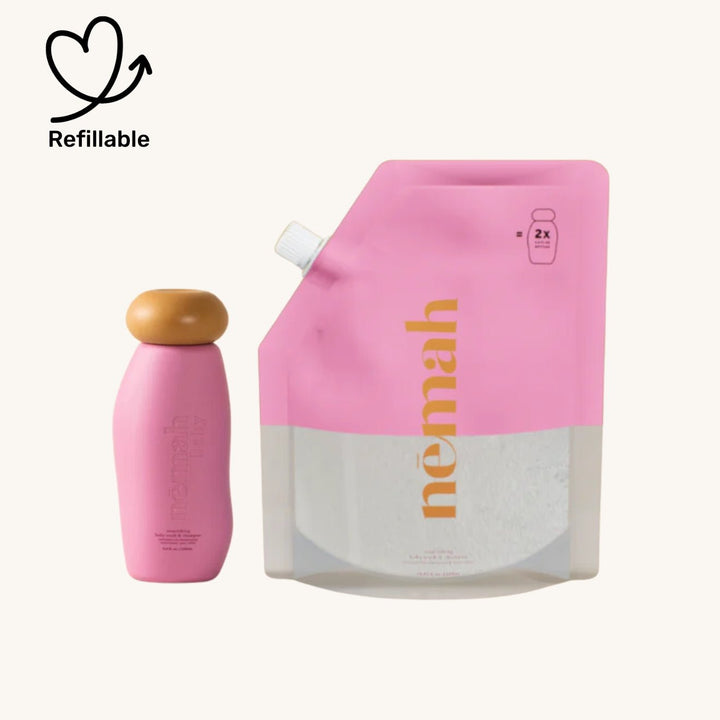
$19.99
Nemah’s Baby & Kids Body Wash & Shampoo is a gentle, plant-derived formula designed to cleanse and protect delicate skin and hair. Unlike many mainstream baby shampoos loaded with synthetic fragrances, sulfates, parabens, and dyes that can dry or irritate… read more
Hello Bello Kids Shampoo & Body Wash
Created by parents, for parents, this budget-friendly option combines affordability with safety. Aloe vera and calendula extract provide hydration while avoiding harsh foaming agents and phthalates. Clinical research in Clinical, Cosmetic and Investigational Dermatology supports aloe’s role in soothing skin barrier function.
Best for: Families seeking a safe, everyday option at an accessible price point.
Key Ingredients: Aloe vera, calendula, coconut-derived cleansers.
Why It’s Safe: Cruelty-free, tear-free, and free from parabens, phthalates, and synthetic fragrance.
The Best Non-Toxic Conditioners for Tangle-Free Hair
Children’s hair doesn’t need the heavy conditioning agents used in adult products. Instead, lightweight hydration prevents tangles and keeps strands soft without buildup. Conditioners should be silicone-free, since silicones like dimethicone coat the hair shaft but prevent true moisture absorption—a fact highlighted in the International Journal of Trichology. Pairing a clean, silicone-free conditioner with the best non toxic shampoo for kids ensures hydration that actually penetrates the hair instead of masking it.
Dabble & Dollop Conditioner
Pairs seamlessly with the brand’s 3-in-1 shampoo. Lightly scented with food-grade ingredients, it’s gentle enough for daily use and fun for children without compromising safety. This nourishing formula fits right alongside the best non toxic shampoo for kids.
Best for: Kids who enjoy playful bath routines but need gentle detangling.
Why It’s Safe: Formulated without parabens, phthalates, or synthetic fragrances.
Tear-Free Conditioner for Kids
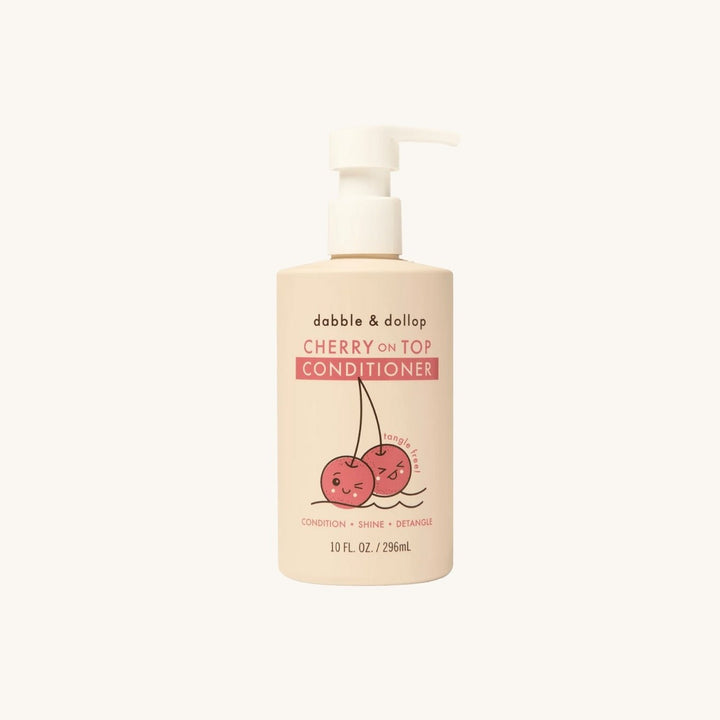
$15.99
Indulge your little one's locks with Dabble & Dollop's Cherry on Top, Tear-Free Conditioner for Kids, a luxuriously creamy formula infused with the sweet, natural aroma of cherries. Lovingly made in California from vegan, plant-based ingredients, it's specifically formulated to be… read more
NEMAH Leave-In Conditioner
Fragrance-free and dermatologist-tested, this formula hydrates without heaviness. Aloe vera and sunflower seed oil work together to reduce frizz and ease tangles. Designed for sensitive scalps, it fits right alongside the best non toxic shampoo for kids as part of a complete, safe hair care routine.
Best for: Children with fragrance sensitivities or eczema-prone skin.
Why It’s Safe: Hypoallergenic, clean ingredients, and free from synthetic fragrance or hidden toxins.
Detangler & Leave-In Conditioner for Kids
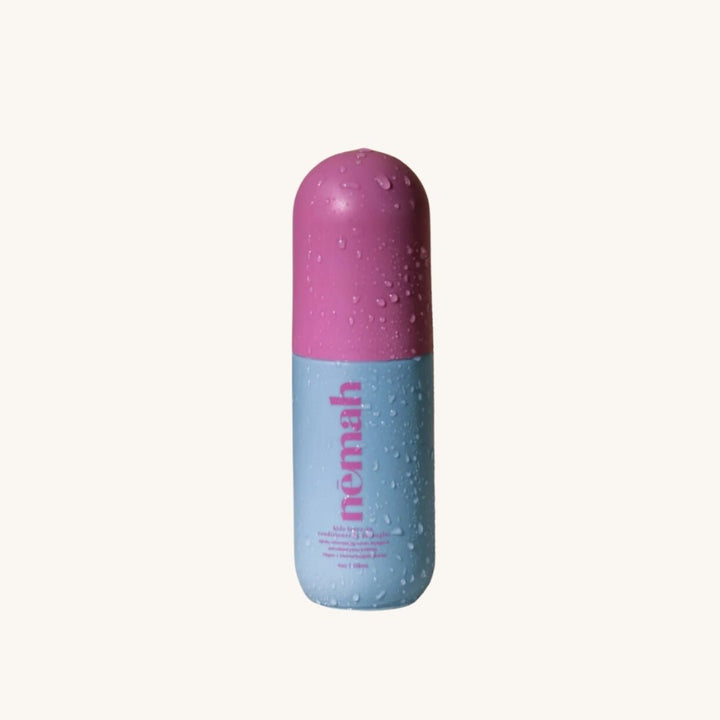
$16.99
Nemah’s Detangler & Leave-In Conditioner for Kids is a clean, lightweight formula designed to make brushing simple and stress-free. Powered by olive-derived squalane, it locks in weightless moisture to keep strands soft and manageable, while coconut oil deeply nourishes, smooths rough… read more
Ever Eden Kids Detangling Conditioner
Developed by pediatricians, this conditioner is designed to be lightweight but effective. Sunflower seed oil and shea butter provide natural slip and softness without reliance on silicones.
Best for: Fine or tangle-prone hair.
Why It’s Safe: Plant-based, pediatrician-developed, free from parabens and sulfates.
Key Takeaway
The best non toxic shampoo for kids is one that not only avoids obvious toxins like sulfates and parabens but also respects a child’s unique physiology—thinner skin, more absorbent scalps, and developing systems. By pairing safe shampoos with lightweight, silicone-free conditioners, parents can ensure their child’s hair stays soft, manageable, and healthy without unnecessary chemical exposure.
Section 3: Safe, Chemical-Free Detanglers for Kids
Tangles are one of the most common hair care struggles parents face, particularly for children with long, curly, or fine hair. While many commercial detanglers promise smoothness, they often rely on silicones, synthetic fragrances, and drying alcohols that coat the hair shaft without nourishing it. Over time, these ingredients can lead to buildup, dryness, and scalp irritation. Studies in the International Journal of Cosmetic Science note that silicone-based conditioning agents provide only temporary effects while impairing true moisture absorption, which is why children’s hair often becomes brittle after repeated use of these sprays.
A safe detangler should soften and hydrate strands while respecting the delicate balance of a child’s scalp. Instead of artificial slip agents, plant-based moisturizers like aloe vera, marshmallow root, and coconut-derived conditioners provide natural manageability. When used alongside the best non toxic shampoo for kids, these gentle detanglers complete a routine that keeps hair smooth, healthy, and free from unnecessary chemicals.
What to Look for in a Truly Non-Toxic Detangler
Silicone-Free: Avoid ingredients like dimethicone and cyclopentasiloxane, which create buildup and dryness over time.
No Synthetic Fragrances: Prevents phthalate exposure, which Environmental Health Perspectives links to endocrine disruption in children.
Moisturizing and Lightweight: Aloe vera, glycerin, and marshmallow root extract hydrate without heaviness.
Tested for Sensitive Skin: Ideally dermatologist-tested and free from allergens common in children’s products.
The Best Non-Toxic Detanglers for Kids
NEMAH Conditioning Detangler
Developed by a mom-founded brand with a focus on safe, baby and child care, this lightweight spray is designed for sensitive scalps. Aloe vera and coconut-based conditioners hydrate strands, reducing knots without residue.
Best for: Children with fine or fragile hair needing a daily-use spray.
Why It’s Safe: Fragrance-free, dermatologist-tested, free from parabens and silicones.
Detangler & Leave-In Conditioner for Kids

$16.99
Nemah’s Detangler & Leave-In Conditioner for Kids is a clean, lightweight formula designed to make brushing simple and stress-free. Powered by olive-derived squalane, it locks in weightless moisture to keep strands soft and manageable, while coconut oil deeply nourishes, smooths rough… read more
SLiCK KiDS Natural Hair Detangler
An Australian-made spray that harnesses native botanicals like quandong fruit and jojoba oil. Free from sulfates, parabens, and synthetic perfumes, this detangler smooths tangles naturally while adding light hydration.
Best for: Active kids with thicker, wavy, or curly hair types.
Why It’s Safe: Uses plant-derived slip agents instead of silicones; naturally scented with essential oils.
Knot A Chance! Children's Detangler
$14.99
Make hair care a joyful, stress-free experience with this gentle children’s detangler, a safer, all-natural alternative to mainstream products. Available in the refreshing scents of Mandarin Grape or Strawberry, this lightweight formula is enriched with native Australian Emu Apple extract,… read more
California Baby Calming™ Hair Detangler
Infused with lavender and clary sage essential oils, this detangler doubles as a soothing part of a bedtime routine. Herbal extracts condition, while quinoa protein helps restore strength and shine.
Best for: Evening use when relaxation is part of the hair care ritual.
Why It’s Safe: Free from synthetic fragrance and enriched with plant proteins for resilience.
DIY Non-Toxic Detangler Recipe
Parents who want full control over ingredients can easily make a safe, effective detangler at home. This recipe uses chamomile tea, aloe vera, and argan oil for natural slip and hydration.
Ingredients:
1 cup chamomile tea (soothes scalp and reduces irritation)
2 tablespoons aloe vera juice (adds slip for brushing)
1 teaspoon argan oil (hydrates without heaviness)
Instructions:
Brew chamomile tea and let it cool completely.
Mix tea with aloe vera juice and argan oil.
Pour into a spray bottle and shake well before use.
Mist onto damp or dry hair and gently comb through.
Why It Works: Chamomile calms sensitive skin, aloe vera hydrates, and argan oil adds lightweight moisture—without synthetic chemicals or buildup.
Key Takeaway
Detanglers should never rely on silicones or synthetic fragrances for short-term smoothness. By choosing clean, plant-based options—or making your own at home—parents can reduce tears at brushing time while protecting scalp health and keeping hair soft, shiny, and manageable. The best non toxic shampoo for kids works hand in hand with these safe detanglers to create a truly gentle, effective hair care routine.
Section 4: How to Build a Simple Non-Toxic Hair Care Routine for Kids
A clean hair care routine for children is not just about choosing the right products; it’s about setting healthy habits that protect their scalps and support natural hair growth. Unlike adults, children do not need frequent washing or heavy styling. In fact, over-cleansing and using harsh products can disrupt the scalp’s natural barrier, leading to dryness, irritation, and increased tangling. Studies in the Journal of the European Academy of Dermatology and Venereology highlight that children’s skin and scalp are more vulnerable to chemical and physical stress, making gentle practices essential—and beginning with the best non toxic shampoo for kids helps ensure those routines stay safe and effective.
Here is a step-by-step approach to caring for your child’s hair using safe, non-toxic methods.
Step 1: Wash Gently and Infrequently
Daily shampooing is unnecessary for children. Because their sebaceous glands are less active than adults’, kids produce less oil and benefit from shampooing only 2–3 times per week. Over-washing can strip protective sebum and lead to frizz, tangling, or an itchy scalp.
Use lukewarm water instead of hot, which dermatology research in Clinical, Cosmetic and Investigational Dermatology has shown can worsen dryness.
Massage the scalp gently rather than scrubbing, which helps remove buildup without causing irritation.
Step 2: Condition Lightly for Hydration and Slip
Even when hair looks healthy, a lightweight conditioner helps reduce tangles and restore moisture. Avoid heavy conditioners with silicones, as they coat rather than nourish strands. Instead, choose plant-based hydration from aloe vera, coconut oil, or shea butter.
Apply only from mid-length to ends, keeping product off the scalp to prevent buildup.
Leave in for 1–2 minutes before rinsing with cool or lukewarm water to lock in moisture.
Step 3: Detangle with Care
Brushing technique matters as much as the product you use. Rough brushing can cause breakage and painful tugging. A non-toxic detangler spray with aloe or marshmallow root makes strands more manageable.
Always start at the ends and work upward in sections. This method, supported by pediatric trichologists, minimizes pain and reduces breakage.
Use a wide-tooth comb or bamboo detangling brush instead of fine-tooth combs that snag delicate hair.
For ideas on gentle, age-appropriate hairstyles that won’t stress the scalp, see our guide: Chic AND Child-Friendly: Easy Hairstyles and Natural Hair Care for 6-Year-Olds.
Step 4: Style with Safe Alternatives
Conventional styling products—like hairsprays and gels—often contain drying alcohols and synthetic polymers that damage children’s hair. Instead, opt for natural solutions:
Flaxseed gel provides light, flexible hold.
A few drops of argan or coconut oil tame frizz and add shine.
Avoid heat styling altogether. If drying is necessary, use the cool setting on a blow dryer to prevent thermal damage.
Step 5: Protect Hair Overnight
Nighttime routines impact hair health just as much as daytime care. Friction from cotton pillowcases can lead to tangling and frizz.
A silk or satin pillowcase reduces breakage and static.
For longer hair, a loose braid before bed helps prevent morning knots.
A light mist of aloe vera water or detangler spray before sleep can help strands stay hydrated through the night.
Quick Recap for Parents
Wash only 2–3 times per week with a gentle, sulfate-free shampoo.
Condition lightly, focusing on mid-length to ends.
Detangle with a wide-tooth comb, starting from the ends upward.
Style with natural, non-toxic alternatives—skip harsh sprays and gels.
Protect overnight with silk pillowcases or loose braids.
A thoughtful routine doesn’t have to be complicated. By pairing safe, non-toxic products with gentle techniques, parents can keep their child’s hair soft, strong, and manageable—without exposing them to unnecessary chemicals or damaging practices. Centering this routine on the best non toxic shampoo for kids ensures every step builds toward healthier hair and safer daily care.
Section 5: DIY Non-Toxic Hair Care Recipes for Kids
Homemade products can be a safe, affordable, and effective addition to your child’s routine—especially when you want full control over ingredients. Many store-bought kids’ shampoos and conditioners, even those labeled “natural” or “organic,” still contain sulfates, parabens, synthetic preservatives, or fragrances. By making your own formulas, you eliminate unnecessary chemicals and focus on proven, plant-based ingredients that nourish children’s sensitive scalps.
Pediatric dermatology research supports this approach: studies in the Journal of Clinical and Aesthetic Dermatology emphasize that aloe vera, chamomile, and plant oils can soothe irritation and restore moisture balance without the risks associated with synthetic surfactants and preservatives. These DIY recipes give you practical ways to put that science into action, offering a homemade alternative to even the best non toxic shampoo for kids.
DIY Coconut Milk Shampoo (Sulfate-Free & Hydrating)
Most commercial shampoos contain foaming agents like SLS (sodium lauryl sulfate) that strip the scalp. This recipe uses coconut milk, rich in natural fats and vitamins, to hydrate while gently cleansing.
Ingredients:
½ cup coconut milk (hydrates and nourishes)
¼ cup liquid castile soap (mild, plant-based cleanser)
1 teaspoon aloe vera gel (soothes the scalp)
5 drops lavender essential oil (optional for a calming scent)
Instructions:
Mix ingredients in a clean bottle or dispenser.
Shake before each use.
Massage gently into wet hair and rinse thoroughly.
Store in the refrigerator for up to one week.
Why It Works: Coconut milk replenishes hydration, while castile soap offers safe cleansing without sulfates. Aloe vera supports the scalp’s natural barrier.
DIY Aloe & Chamomile Conditioner (Lightweight & Silicone-Free)
Conditioners for kids should never rely on silicones, which coat hair without delivering true moisture. This plant-based blend hydrates, detangles, and soothes sensitive scalps naturally.
Ingredients:
½ cup aloe vera gel (lightweight moisture)
½ cup chamomile tea (calms irritation and adds shine)
1 tablespoon jojoba oil (vitamin-rich hydration)
Instructions:
Brew chamomile tea and cool completely.
Mix with aloe gel and jojoba oil in a clean bottle.
Apply after shampooing, leave for 2 minutes, then rinse.
Why It Works: Aloe and chamomile reduce inflammation, while jojoba oil mimics natural scalp sebum, providing lightweight, non-greasy moisture.
DIY Marshmallow Root Detangler Spray (Slip Without Silicones)
Silicone-based detanglers can lead to buildup and dryness over time. Marshmallow root contains natural mucilage, a gel-like compound that provides slip and softness, making hair easier to comb through.
Ingredients:
1 cup water
2 tablespoons marshmallow root (provides slip)
2 tablespoons aloe vera juice (hydrates and smooths)
1 teaspoon argan oil (lightweight nourishment)
Instructions:
Boil water and steep marshmallow root for 10 minutes.
Strain, then mix with aloe vera juice and argan oil.
Pour into a spray bottle and shake before use.
Mist onto damp or dry hair before detangling.
Why It Works: Marshmallow root and aloe vera improve manageability naturally, while argan oil adds strength and shine.
DIY Avocado & Banana Hair Mask (Deep Conditioning for Dry Hair)
Children with curly, textured, or dry hair may benefit from periodic deep conditioning. This nourishing mask uses whole foods rich in vitamins, fatty acids, and antioxidants to restore softness and shine.
Ingredients:
½ ripe avocado (vitamins A, D, and E)
½ ripe banana (adds softness and shine)
1 tablespoon coconut oil (locks in moisture)
1 tablespoon honey (natural humectant)
Instructions:
Mash avocado and banana until smooth.
Stir in coconut oil and honey.
Apply to damp hair and leave for 15–20 minutes.
Rinse thoroughly with lukewarm water.
Why It Works: Avocado and banana provide essential nutrients, while coconut oil and honey help seal hydration and improve elasticity.
Safe Hair Care in Practice
DIY hair care is not about perfection—it’s about control and transparency. By using simple, plant-based ingredients, you avoid hidden toxins while teaching children that personal care can be safe, sustainable, and fun. Even if you don’t make every product yourself, these recipes highlight the principles to look for in truly non-toxic hair care: gentle cleansers, natural moisturizers, and no unnecessary chemicals. These same principles are what define the best non toxic shampoo for kids available on the market today.
Section 6: Baby Hair Care Products & Safe Options for Infants
Hair care for babies and infants requires even more caution than for older children. Infants’ skin is thinner, has a higher surface-area-to-body-weight ratio, and is more permeable to environmental exposures. According to the American Academy of Pediatrics (AAP), infant skin absorbs substances at a higher rate than adult skin, making the use of harsh chemicals particularly risky. This means that ingredients like sulfates, parabens, synthetic fragrances, or dyes—already concerning for children—can be even more problematic for babies.
In addition, infants produce less sebum than older children, so their scalps are naturally drier and more prone to irritation. For this reason, dermatologists often recommend fragrance-free, tear-free cleansers that are pH-balanced and free from unnecessary preservatives. The goal is not only to clean gently but also to support the scalp’s developing barrier function and prevent dryness, redness, or flaking. Parents who are already using the best non toxic shampoo for kids can look for equally safe, infant-friendly formulas to ensure protection at every stage.
What to Look for in Safe Hair Products for Infants
Fragrance-Free: Even natural essential oils can irritate an infant’s delicate skin or trigger eczema flares.
Ultra-Gentle Cleansers: Coconut-based surfactants are safer than sulfates.
No Dyes or Parabens: Avoid unnecessary additives that can disrupt skin balance.
pH-Balanced: Maintains the skin’s acid mantle, which is still developing in newborns.
Dermatologist-Tested: Validates safety for sensitive or eczema-prone skin.
Recommended Safe Hair Care Products for Infants
Nemah Baby & Kids Body Wash & Shampoo
This gentle, plant-derived formula is designed to cleanse and protect delicate skin and hair without sulfates, parabens, synthetic fragrances, or dyes. Powered by Actismart™ Chamomile and Activera™ Aloe, it reduces redness, calms irritation, and restores the scalp’s natural barrier. Jojoba oil and coconut oil deliver vitamins and fatty acids that nourish while leaving hair soft and tangle-free.
Best for: Infants and toddlers with sensitive, dry, or easily irritated skin.
Key Ingredients: Chamomile, aloe vera, jojoba oil, coconut oil.
Why It’s Safe: Dermatologist-approved, tear-free, and available in sustainable refill packaging.
Non-Toxic Baby & Kids Body Wash & Shampoo – Refillable Set

$19.99
Nemah’s Baby & Kids Body Wash & Shampoo is a gentle, plant-derived formula designed to cleanse and protect delicate skin and hair. Unlike many mainstream baby shampoos loaded with synthetic fragrances, sulfates, parabens, and dyes that can dry or irritate… read more
EWG Verified, Fragrance-Free Foaming Infant Body Wash
Gentle enough for newborns and effective for eczema-prone skin, this ultra-pure foaming wash is crafted for babies and toddlers with sensitive or dry skin. It contains fewer than ten vegan, natural ingredients and is completely free from fragrance, essential oils, and dyes. Hypoallergenic, dermatologist-tested, and pH-balanced, it delivers a soft, tear-free cleanse that won’t disrupt the skin barrier.
Best for: Newborns and infants with eczema or extreme sensitivity.
Key Ingredients: Plant-based surfactants, aloe vera, and protective moisturizers.
Why It’s Safe: EWG VERIFIED™, lab-tested, and manufactured in the USA for purity and transparency.
EWG Verified, Fragrance-Free Foaming Infant Body Wash
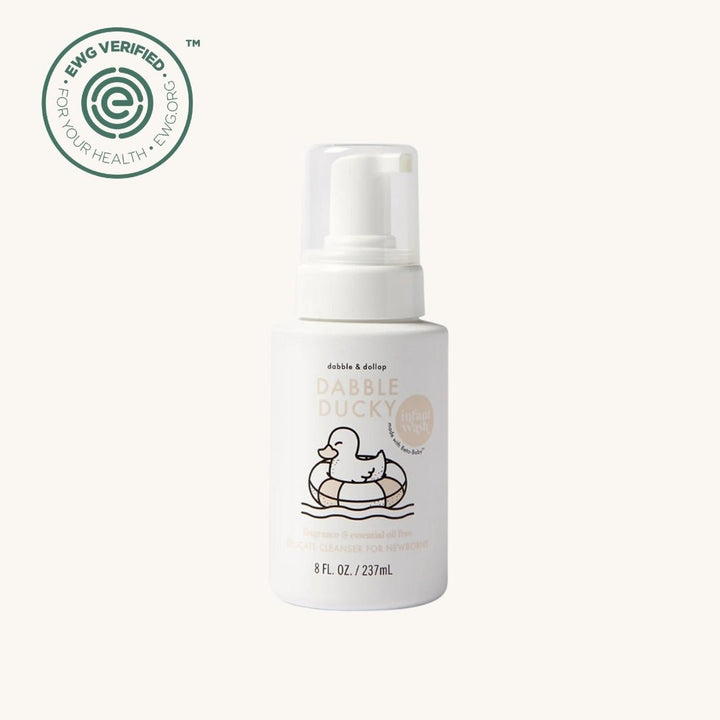
$14.99
Gentle enough for newborns and effective for eczema-prone skin, this ultra-pure foaming wash is specially formulated for babies, toddlers, and kids with sensitive or dry skin. Free from fragrance, essential oils, and dyes, it delivers a soft, tear-free cleanse without… read more
The Bottom Line for Infant Safety
Baby hair care should not be treated as a smaller version of adult care. Infants have different skin physiology and require extra attention to ingredient safety and scalp protection. By choosing products that are fragrance-free, dermatologist-tested, and backed by third-party verification such as EWG, parents can ensure bath time is not only gentle but truly safe. Starting with clean, transparent formulas from the very first months of life sets the stage for a lifetime of healthier habits, just as choosing the best non toxic shampoo for kids does in later childhood.
Conclusion: Raising the Next Generation of Healthy Hair Lovers
Choosing the best non toxic shampoo for kids is not about following a trend; it’s about safeguarding children’s health during their most vulnerable years. Research published in Environmental Health Perspectives and the Journal of Applied Toxicology confirms what many parents already suspect—repeated exposure to sulfates, parabens, phthalates, and synthetic fragrances can irritate skin, disrupt hormones, and compromise the natural barrier function of the scalp. Children’s thinner, more permeable skin magnifies these risks, making ingredient safety non-negotiable.
The good news is that safer options are available. From shampoos and conditioners made with plant-based cleansers and natural moisturizers, to detanglers that rely on aloe vera and marshmallow root instead of silicones, parents now have access to products that support healthy hair without unnecessary chemicals. For infants, fragrance-free, dermatologist-tested formulas provide an even gentler level of protection, ensuring that bath time is both safe and soothing from the very beginning.
At Popsicle Beauty Club, we believe clean beauty should start at the root. By choosing transparent, science-backed formulas and adopting simple, gentle routines, parents not only protect their children today but also model healthier habits for the future. Every decision—whether it’s reaching for a refillable bottle of shampoo, skipping synthetic fragrance, or mixing a DIY detangler at home—contributes to raising a generation that values health, safety, and sustainability. Centering these choices around the best non toxic shampoo for kids ensures that hair care is not just routine, but a foundation for lifelong wellness.
The message is clear: small, intentional choices matter. By rethinking hair care now, we can protect growing bodies, preserve delicate scalps, and make sure our children experience beauty in its safest, most natural form.
To learn more about choosing the safest shampoos, conditioners, and detanglers for kids, visit Non-Toxic Hair Care for Kids for a complete guide to gentle, chemical-free hair care.
About the Author: This article was written by the contributing writers at Popsicle Beauty Club—a team of moms, educators, and clean beauty advocates passionate about creating a safer, more imaginative world for kids. We believe in empowering parents with trusted information and offering fun, non-toxic beauty and personal care products that let children play, express, and explore—without compromising their health.
FAQs
Do kids really need a different shampoo than adults?
Yes. Children’s skin and scalp are thinner, more permeable, and produce less natural oil than adults. According to the American Academy of Pediatrics, this makes them more vulnerable to irritation and chemical absorption. Shampoos designed for adults often contain sulfates, synthetic fragrances, and preservatives that are too harsh for kids’ developing skin. Choosing the best non toxic shampoo for kids ensures cleansing without stripping natural oils or exposing them to unnecessary risks.
How often should I wash my child’s hair?
Most children only need their hair washed 2–3 times per week. Washing more often can dry out the scalp and make hair more prone to frizz, tangles, and irritation. For children with curly or textured hair, weekly washing may be enough. On non-wash days, a rinse with lukewarm water or a spritz of non-toxic detangler helps keep hair fresh without disrupting the scalp’s balance.
Do babies need conditioner?
Not usually. Infants have very fine hair that does not require conditioning. In fact, heavy products can weigh hair down and irritate the scalp. However, for babies with thicker or curlier hair, a fragrance-free, lightweight conditioner or leave-in product can help prevent tangles and dryness. Always choose products tested for sensitive skin, ideally fragrance-free and dermatologist-approved.
What’s the problem with “tear-free” baby shampoos I see in stores?
“Tear-free” usually means the formula is less irritating to eyes, but it doesn’t guarantee safety. Many mainstream baby shampoos still contain sulfates, parabens, synthetic fragrances, or even formaldehyde-releasing preservatives. These chemicals may not sting the eyes but can still irritate skin or disrupt hormones. Look for products that are both tear-free and non-toxic, verified by third-party certifications like EWG Verified™.
Are DIY shampoos and detanglers really safe for kids?
When made with the right ingredients, yes. Recipes using aloe vera, chamomile, coconut milk, or marshmallow root can be effective, gentle alternatives. However, homemade products do not have preservatives, so they should be made in small batches and stored in the refrigerator if water-based. For convenience and consistency, many parents rotate between trusted store-bought non-toxic products and simple DIYs.
What are the safest hair products for infants?
For newborns and infants, look for fragrance-free, dermatologist-tested, and pH-balanced cleansers. Avoid anything with sulfates, dyes, parabens, or essential oils, since babies’ skin can react strongly. Products like Nemah’s Baby & Kids Body Wash & Shampoo or EWG Verified, Fragrance-Free Foaming Infant Body Wash are specifically formulated for delicate skin and safe enough for daily use, even in babies with eczema-prone skin.
Do I need to worry about cradle cap when choosing baby shampoo?
Yes. Cradle cap (seborrheic dermatitis) is common in babies and often worsened by harsh cleansers that strip too much oil from the scalp. Pediatric dermatologists recommend gentle, fragrance-free shampoos to help loosen flakes without drying the skin further. Look for products with soothing ingredients like chamomile or aloe vera, which can reduce redness and irritation.
What should I do if my child reacts to a new shampoo?
Stop using the product immediately and return to a fragrance-free, dermatologist-tested option. Reactions often appear as redness, itchiness, or flaking on the scalp. If symptoms persist, consult your pediatrician or dermatologist. Always patch test new products on a small area before applying them to your child’s whole head.
